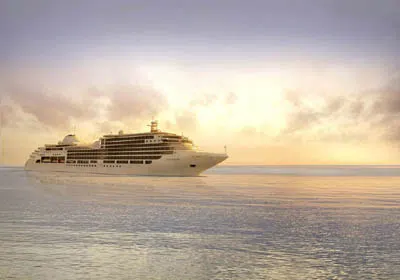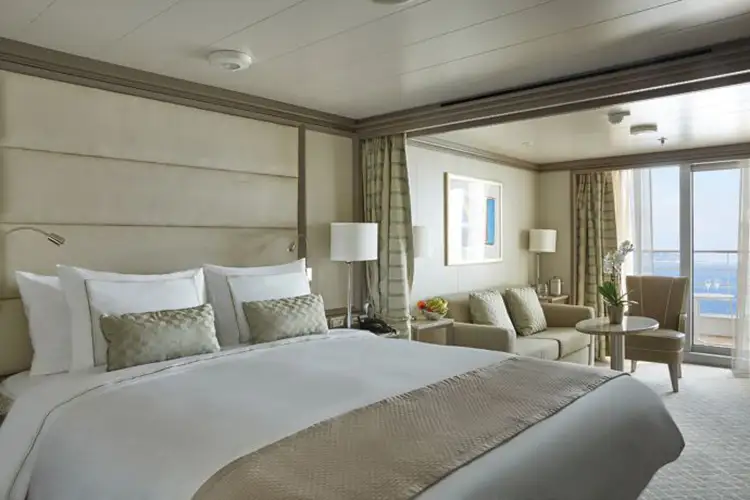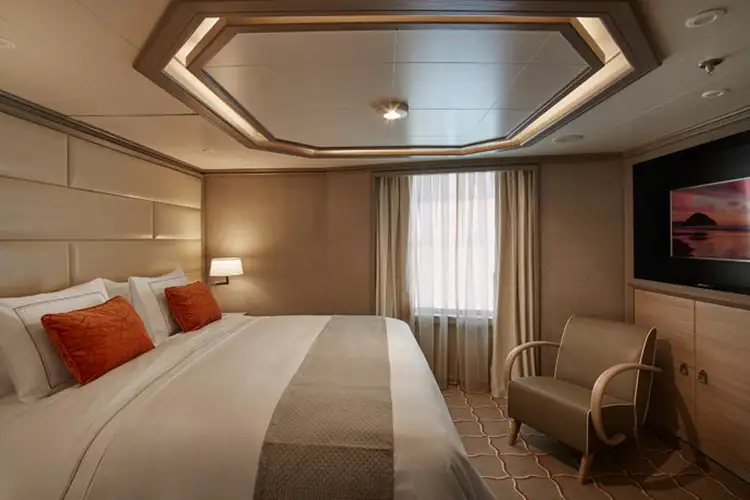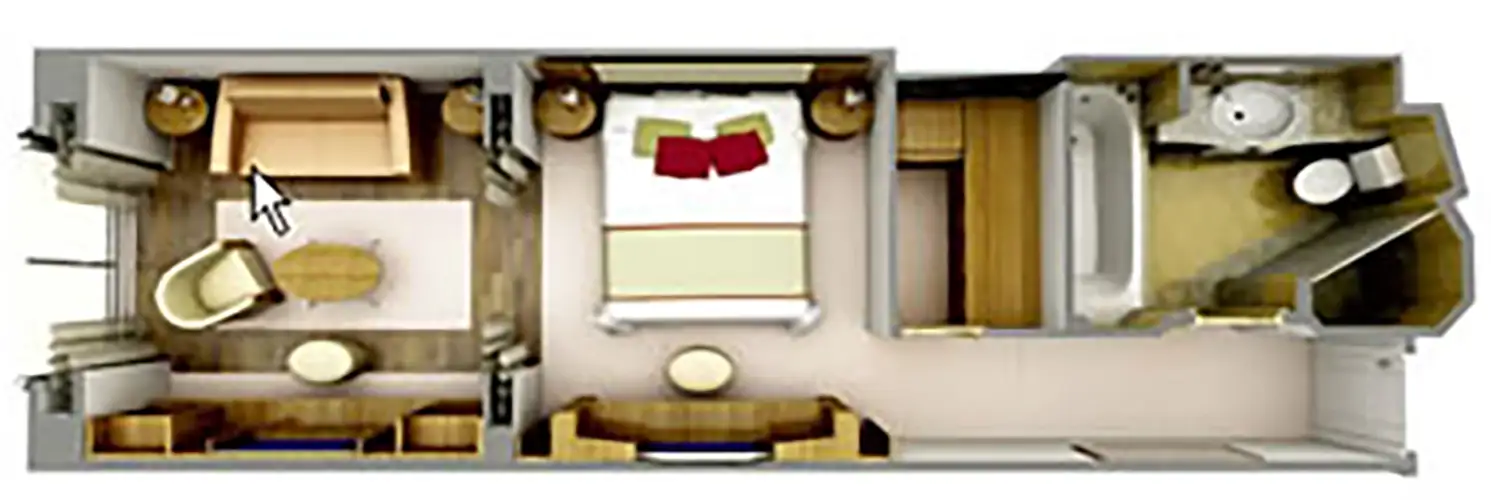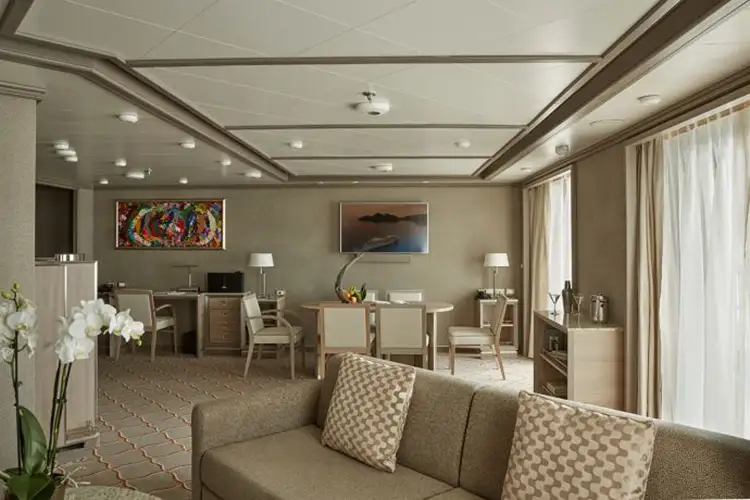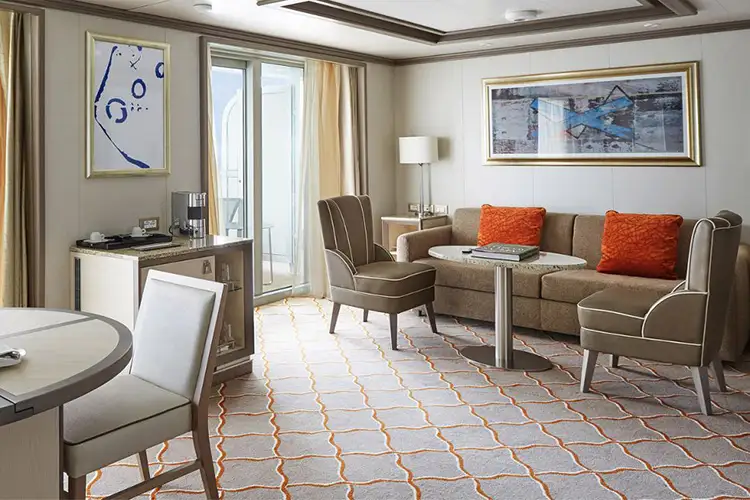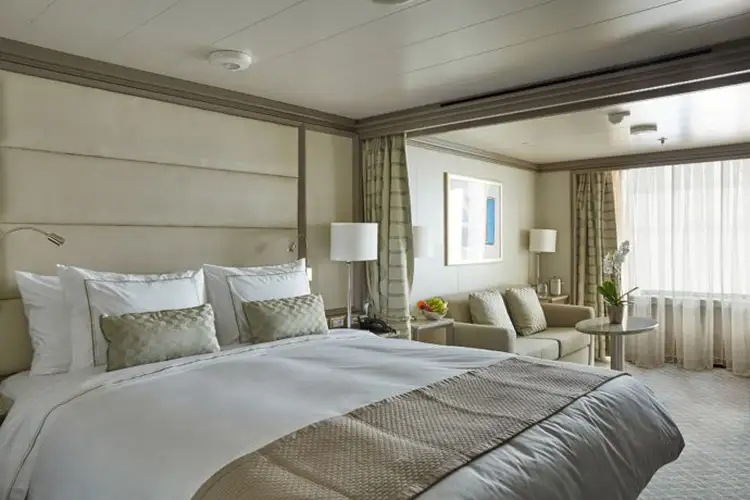11 nights from Venice (Italy) with Silver Spirit
Mediterranean: Italy, Croatia, Greece
Enter the number of occupants and age to view cabin prices
Cruise itinerary
-
Friday, 25 October 2024 - 07:00Venice
-
Saturday, 26 October 2024 08:00 - 06:00Trieste
-
Sunday, 27 October 2024 08:00 - 10:00Ravenna
-
Monday, 28 October 2024 08:00 - 06:00Opatija
-
Tuesday, 29 October 2024 08:00 - 07:00Split
-
Wednesday, 30 October 2024 08:00 - 10:30Dubrovnik
-
Thursday, 31 October 2024 08:00 - 06:00Bari
-
Friday, 1 November 2024 09:00 - 06:00Korfu
-
Saturday, 2 November 2024navigation
-
Sunday, 3 November 2024 08:00 - 11:00Heraklion
-
Monday, 4 November 2024 08:00 - 07:00Santorini
-
Tuesday, 5 November 2024 07:00Athens
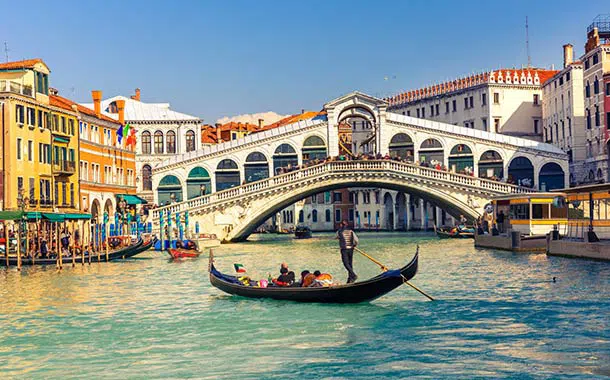
Venice
Setting sail from Venice on a cruise ship is unique and unforgettable. Discover all the cruises that depart from Venice for a great start to your holiday!
Venice it is one of the golden destinations of our age. A unique city of 120 islands, with an ancient history and endless waterways, it attracts a constant flow of tourists from all over the world to see its inspiring architecture and navigate its canals.
There are many souvenirs you can bring home from Venice, but the most lasting memory will be your impression of the city itself.
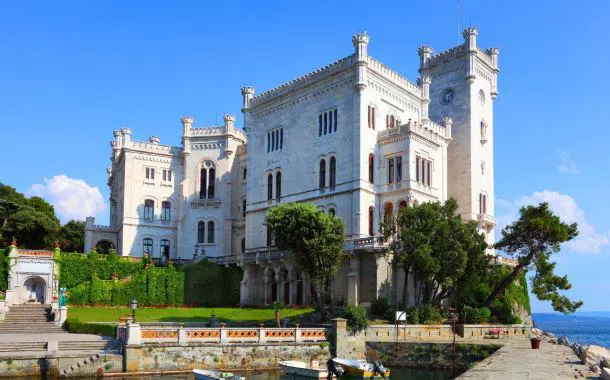
Trieste
Trieste overlooks the Adriatic Sea and it is the starting point of serveral cruise ships. Set sail from Trieste and discover the pearls of the Adriatic, Dubrovink e Kotor, up to reach the enchanting Greek Islands for a unique cruise!
Trieste is a city located in the far end of the Adriatic Sea, in Friuli Venezia Giulia, Trieste is developed on several levels. One of its peculiarities are its wide streets, squares where there are majestic buildings of various architectural styles, they are typical of the Austrian domination era. One feature of the city that is known worldwide is its tourist and commercial port.
The port of Trieste has always been an important commercial centre, for example during the Habsburg Empire it was the main sea outlet for commercial activities.
We suggest you to visit the majestic Piazza dell'Unità d'Italia, that directly overlooks the sea and offers a very suggestive sight. Trieste is a city where the influence of the East is evident both in its traditions and in the local cuisine that has united flavours and various ingredients for unique recipts. The main dishes consist of soups and stews, but also gnocchi and stuffed pasta. If, on the other hand, you want to try a meat dish, don't miss the tasty cevapcici, very spicy meatballs of Balkan origin. While to finish, enjoy a presnitz, a pastry made of puff pastry and dried fruit of Hungarian origin.
If your ship sets sail from Trieste, do not miss the opportunity to visit this city and its most important monuments such as the Molo Audace. From here you can admire the sea before heading towards the Church of Santa Maria Maggiore, built in Baroque style. Not to be missed is the San Giusto Hill and the famous Roman Theatre, which will leave all archaeology lovers speechless.
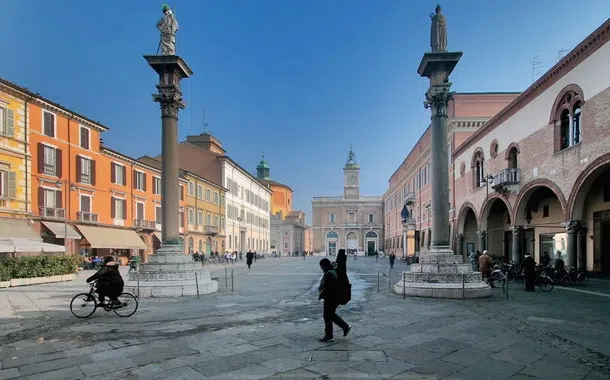
Ravenna
Ravenna lies on a plain near the confluence of the rivers Ronco and Montone, 10 km inland from the Adriatic Sea, with which it is connected by a canal.
Ravenna was important in history as the capital of the Western Roman Empire in the 6th century AD.
Nothing remains of Ravenna's ancient Roman structures or its port of Classis. Instead, Ravenna's fame is based on the quality and quantity of its 6th-18th century Christian monuments. It was the capital of the Western Roman Empire for 250 years and an important port of entry for the Eastern (Byzantine) Empire. Ravenna reflects in its art and architecture a fusion of Roman architectural forms with Byzantine mosaics and other decorations.
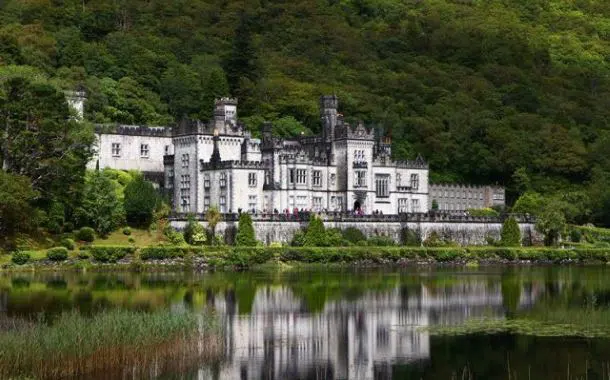
Opatija
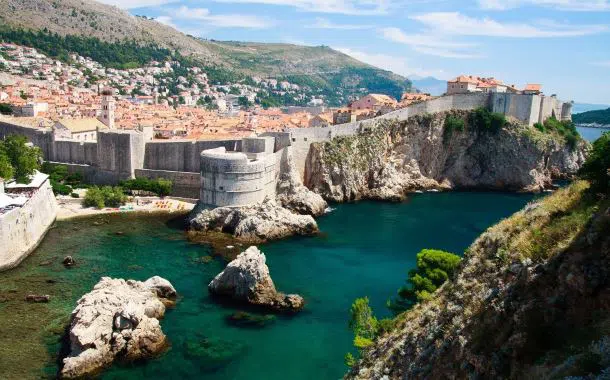
Split
Split (in Croatian Split, in Dalmatian Spalatro, in Ancient Greek Ασπάλαθος Aspálathos) is a city in Croatia, capital of Split-Dalmatian region, the principle center of Dalmatia and, with its population of 178,192 inhabitants (in 2011), is the second largest city of the country. Split is also an university and religious center.
The name of the city derives from the thorny broom, a very common shrub in the region, that in ancient Greek was called Aspálathos (Aσπάλαθος). Under the Roman Empire, the city was called 'Spalatum' and in the Middle Ages 'Spalatro' in the Dalmatian language. In the Slavic language it is called 'Split' while in italian 'Spalato'. In the early XIX century, the name became 'Spljet' and then returned to the form 'Split' again.
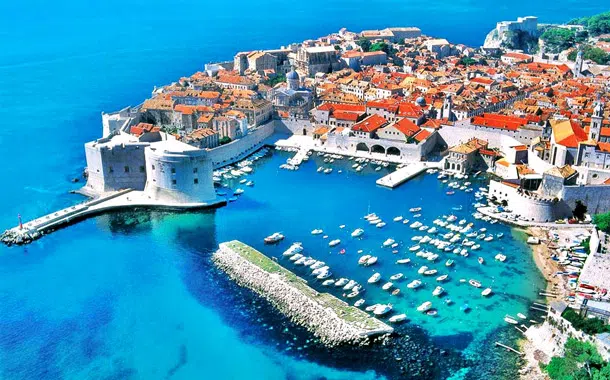
Dubrovnik
Dubrovnik is definitely special. A magnificent curtain of walls surrounds marble streets and Baroque buildings, which give off a pearly light in the Adriatic sunshine.
Picturesque and artistic, Dubrovnik is a tourist hotspot and port in southern Dalmatia, at the foot of the Srđ mountain. From a historical and cultural point of view, it has been included in the list of UNESCO World Heritage Sites.
Thanks to its beauty and everything it has on offer for tourists, Dubrovnik is one of the most attractive destinations in the Mediterranean, so much so that the city can be visited all year round. In addition to its world-famous architectural heritage, this place has beautiful rocky beaches, pebble beaches and sandy beaches, enjoys a Mediterranean climate and also has lush vegetation. The main pedestrian street, Placa, is a melange of cafes and shops with monuments at each end.
Churches, monasteries and museums adorned with finely carved stone, recall an eventful history and a rich artistic tradition. Beyond the city there is a paradise of beaches, wooded peninsulas and a crystal-clear sea dotted with lush islands.
The city is also known for its delicious cuisine and its infrastructure of hotels for tourists. The city offers a wide selection of first-class restaurants, numerous sport and leisure activities, as well as cultural and entertainment events
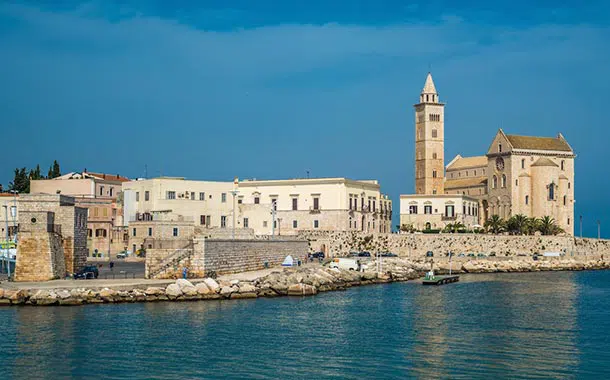
Bari
Bari is one of the most flourishing cities in southern Italy renowned for its important historic centre, once enterly sorrounded by walls. Some of them are still visible and inside them you can visit churches, several theatres and numerous medieval palaces connected by narrow and picturesque streets. Located between two provinces, Brindisi and Foggia, is the third most populous city for number of inhabitants in southern Italy after Naples and Palermo. The relics of St Nicholas, the city's patron saint, are kept in Bari, making its church an important Orthodox centre.
The conformation of the city resembles that of an eagle, whose head is represented by Bari Vecchia, the oldest part of the city. We suggest to you to visit Bari especially in spring and autumn, when the climate is milder and rainfall is scarce. In Bari there are many monuments to visit to those who decide to embark from its port and perhaps take a tour of the city. Don't miss the Cathedral of San Sabino, palazzo de Gemmis and in the center of the Murat district palazzo Mincuzzi, rich in Art Nouveau decorations.
If your ship allows you a long stopover and you are a nature lover, don't miss the Alta Murgia nature park or the Gargano park about 2 hours away from the city. In Bari, the main city park is the 2 Giugno park, with a rich and cool pine forest where you can relax and perhaps have a snack of the classic zeppole. For lunch, we recommend a dish of the famous Apulian orecchiette, Bari's cuisine is rich in traditional agricultural products such as extra virgin olive oil, wheat and tomatoes. Friselle, panzerotti, taralli and fried polenta are very famous. Also of great importance at the table is fresh fish, from gilthead bream alla San Nicola to meatball casserole.
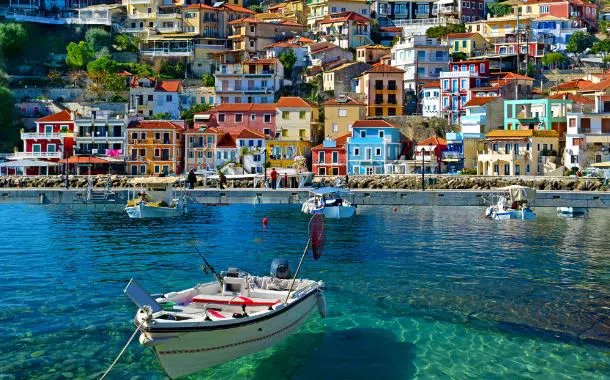
Korfu
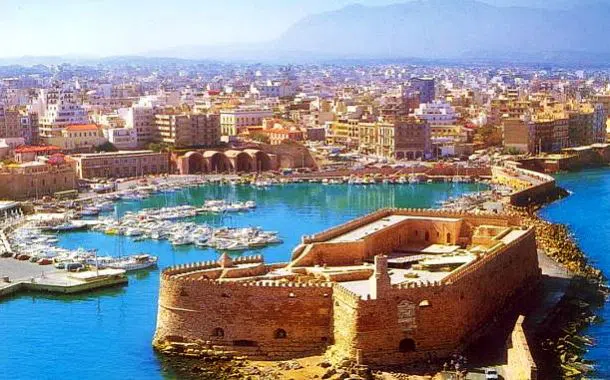
Heraklion
Heraklion is the capital of Cray. It is the largest port and economic center of the island and the third largest city in Greece. This city hosts the archbishop of the Greek Orthodox Church and has religious buildings of great interest.
Heraklion is located in the center of the northern coast of the Greek Islands. With more than 100,00 inhabitants, the city is the capital of Crete, a Venetian fortress during the Middle Ages. The ancient city, with its squares and wide cobbled streets, balconies with wonderful view on the sea, mantains numerous fortifications. In particular there are important and magnificent monuments such as the Church of Agia Ekaterini, dated back to 1555, where the Museum of Sacred Art is hosted. The Archaeological Museum, home to ceramic sculptures, jewellery and frescoes on the Minoan culture. The Historical Museum, home to the only exhibited work of the painter Domenico Theotokopoulos (The Greek), and where you can have a view of Mount Sinai. The Cathedral of St Mena, the patron saint of the city, built between 1862 and 1895 is one of the largest buildings in the area.
Heraklion has an important port and a considerable center for the coastal trade of oil, soap, wine and hides. It has ferry boats and ships with regular itineraries to the islands of Santorini, Ios, Paros, Mykonos, Rhodes, Karpathos and Syros. There are also several daily ferry bgoats to Piraeus, south-west of Athens. The Venetian fortress, still in perfect condition, protects the entrance to the port.
The large combination of reality and mythology, tradition and modernity, make Herklion a cosmopolitan center and one of the most important tourist destination in the Mediterranean. Great beaches, lively nightlife, sunny people, excellent cuisine and the strange "interplay" between the old and the new, guarantees to tourists an unforgettable holiday.
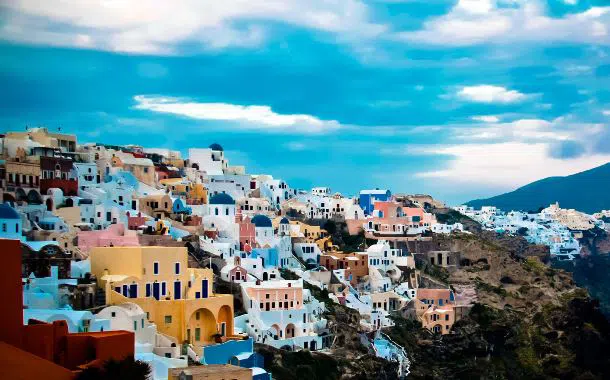
Santorini
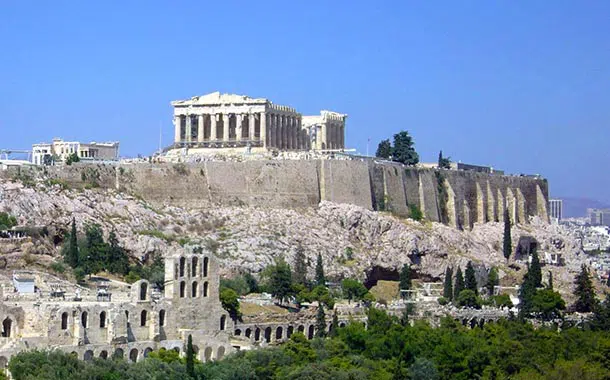
Athens
Many still think of Athens as an ancient city that thrived two and a half thousand years ago. Its symbol is the mighty Acropolis, which dominates almost every view and the itinerary of every visitor, and it is crowned by the iconic Parthenon, which rises above the city, overlooking the sprawling and evolving modern metropolis.
Many still think of Athens as an ancient city that thrived two and a half thousand years ago. Its symbol is the mighty Acropolis, which dominates almost every view and the itinerary of every visitor, and it is crowned by the iconic Parthenon, which rises above the city, overlooking the sprawling and evolving modern metropolis.
Perhaps the most significant change is in the historical centre, which is almost unrecognisable since cars have been banned. This has liberated the area with the most significant archaeological sites, creating the longest, and undoubtedly one of the most splendid, pedestrianised zones in Europe. This huge archaeological park has brought past and present together, returning the cultural and social life of the city to the area around the ancient monuments and surrounding neighbourhoods.
Athens remains a city of contradictions; it is both frustrating and seductive. It is the oldest city in Europe, yet still in a state of transition. It is one of the safest and most vibrant European cities - an intoxicating mix of grunge and grace with an undeniably urban soul.
